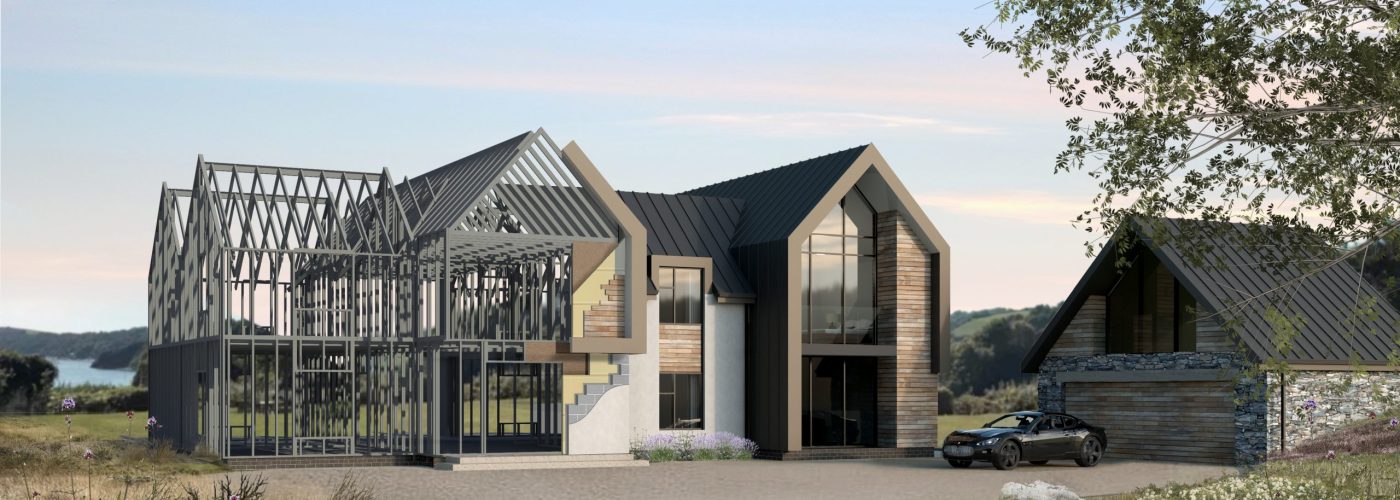Leeds Based Sigmat Look Forward To A Landmark Year For LGSF As Demand For Sustainable MMC Solutions Continues To Grow
With one of the most extraordinary years the industry has ever faced almost behind us and yet more uncertainties to come, one sector has emerged triumphant from the challenges presented by Covid-19.
Yorkshire based LGSF specialists Sigmat say they have seen ‘encouraging’ levels of growth in the MMC sector and anticipate this trajectory is set to continue into 2021 and beyond.
Sigmat, the leading European manufacturer of Light Gauge Steel Framing Solutions, have completed over 300 major projects across a variety of sectors and are widely recognised as one of the industry’s early innovators of LGSF technology. The Sigmat engineered system offers a world-leading product solution with a wide range of unique and patented structural profiles.
As building sites all over the world gradually re-open after lockdown, it’s becoming increasingly clear that construction will look very different post-pandemic. Our global public health crisis has confirmed the urgent need for a new way of building homes, offices and public buildings, using smart construction to tackle design problems, inefficiency, outdated techniques and environmental challenges.
Covid accentuated concerns surrounding close working demands for traditional construction methods and LGSF’s impressive environmental credentials, have all helped to catapult MMC to the top of the construction agenda and Sigmat predict this continued growth will be ones of the top trends throughout the new year.

Sigmat CEO Mark Eburne commented: “We have remained incredibly busy throughout the Covid-19 crisis. Our manufacturing hub in Leeds has remained open and although some projects were rescheduled, we have still managed to see significant growth over the year.”
“With sustainability right at the top of the building agenda, we know LGSF out performs traditional methods on every level. As more developers familiarise themselves with the huge benefits of LGSF construction, we anticipate our market share will continue to strengthen throughout 2021 and beyond.”
With the manufacture of concrete accounting for around 9% of the world’s total carbon emissions, (3 times more than the aviation industry) steel frame structures, are, by their very nature, immediately more environmentally friendly. Sigmat produces its steel frames using at least 42% recycled content and a staggering 97% of its manufacturing waste is also recycled enabling them to maintain their 100% ‘no-landfill’ policy. Reduced transportation requirements, minimal site waste and over 90% end of life recyclability all contribute to making LGSF one of the most sustainable construction methods on the market today.
And as the industry heads into another year of uncertainty, with more potential lockdowns on the horizon and increasingly exacerbated labour issues, LGSF can also help shape new working practices on-site.
Where sites have re-started, the consensus is that at best, a maximum of 60% of workers can safely return under social distancing rules. Tighter immigration controls to help stop the spread of coronavirus will also continue to impact on the current labour shortage in the building sector. With fewer operatives on-site, MMC promotes greater social distancing and in turn offers a much safer environment on-site. This, added to the overall speed of LGSF construction (around 30% faster than traditional methods) could help satisfy the demand for high-quality housing and offer urban populations more space, and reduce overcrowding.
“Sigmat has been involved in the development of LGSF technology for over 20 years,” commented Mark. “As one of the early innovators in MMC we have unparalleled levels of expertise and our commitment to R&D over the past five years in particular means we are well placed to service the increase in demand. 2020 has been a year most of us will want to forget but for Sigmat it’s been a year of industry recognition for the sector, and growth for us as a company. We are looking forward to 2021 and all the new challenges and opportunities that it presents.”





